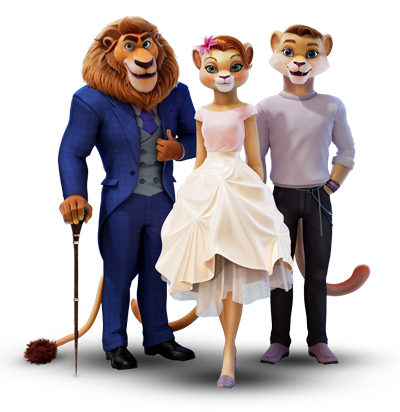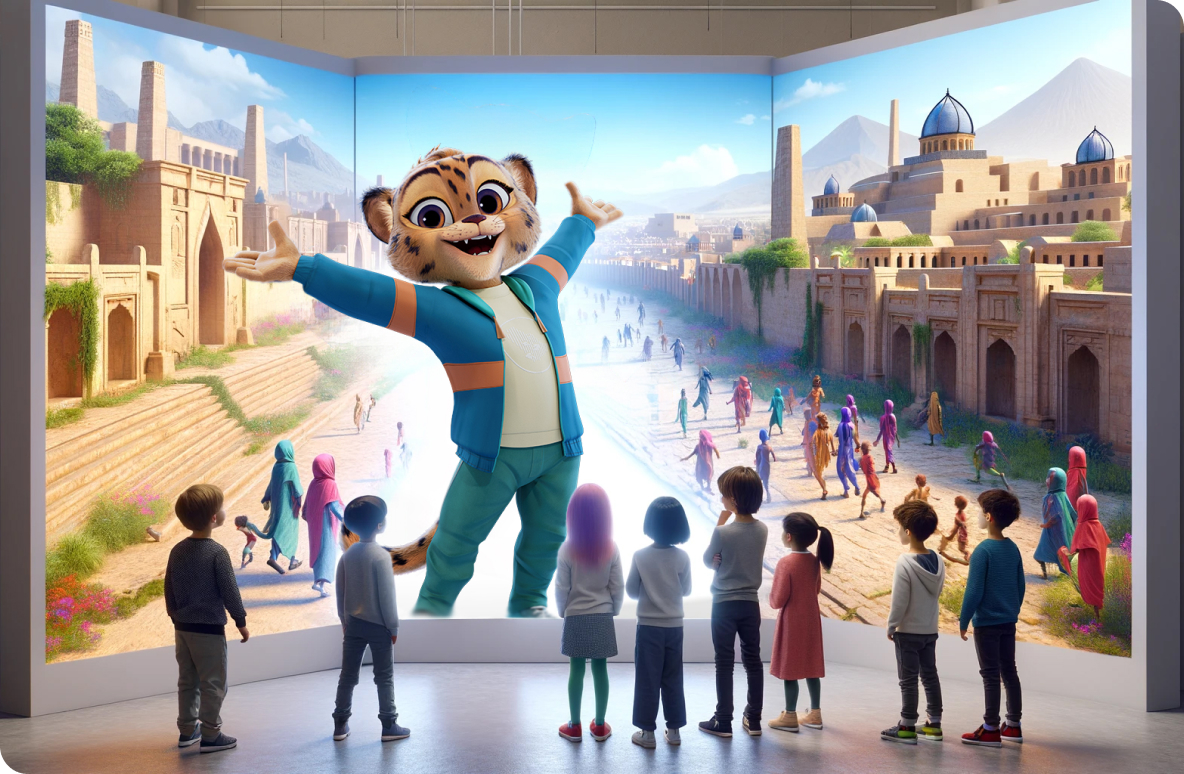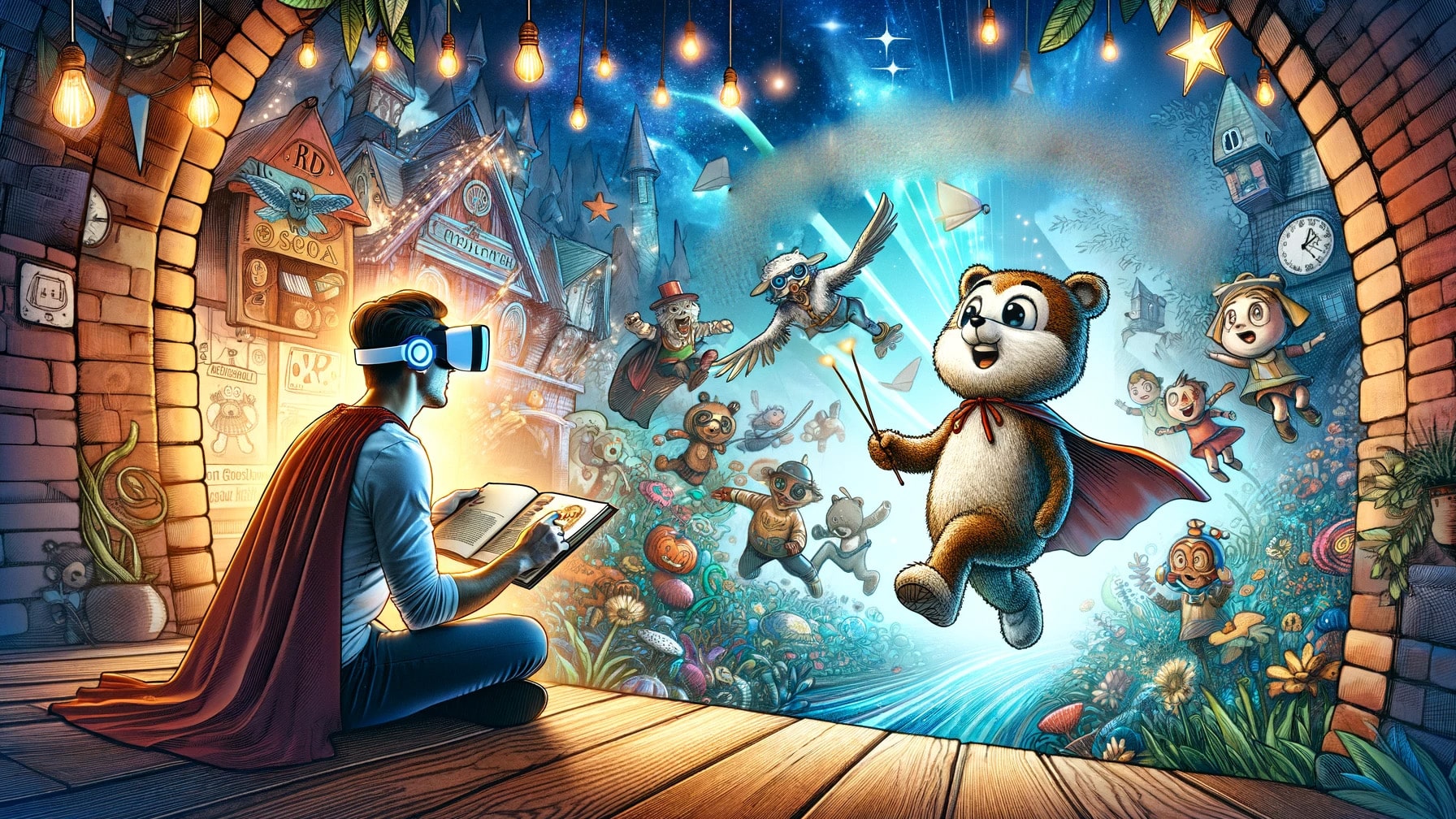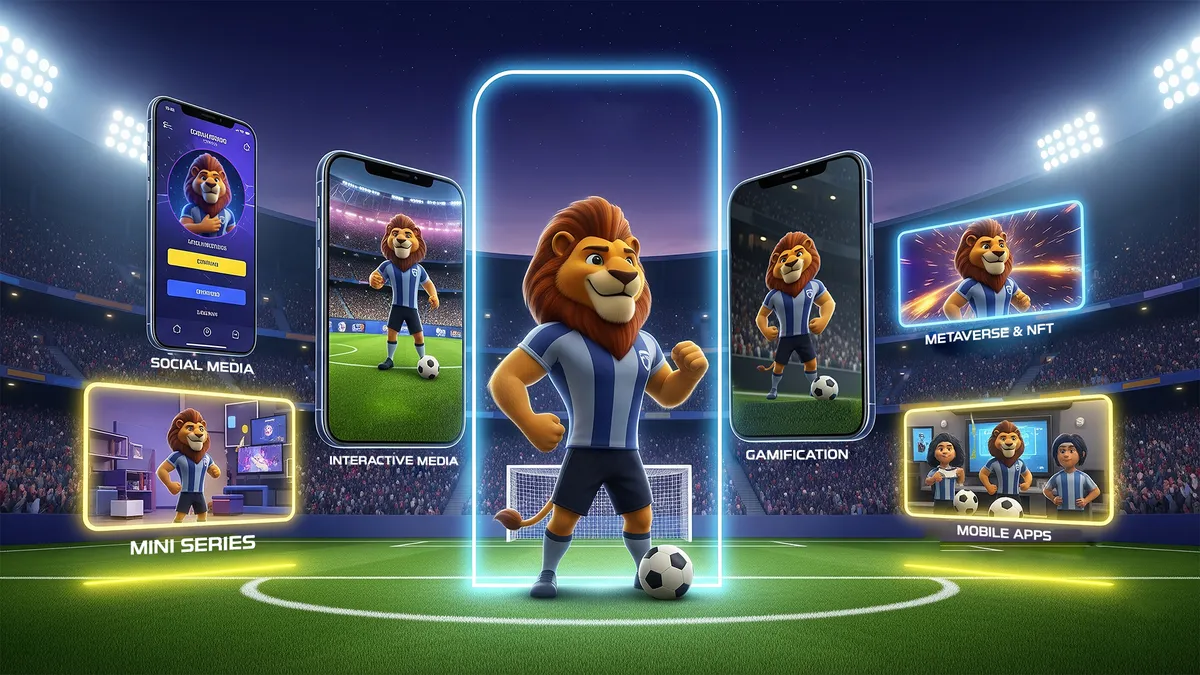
We live in the technological rush of evolution. In this era Augmented Reality (AR) and Virtual Reality (VR) have taken place as transformative forces, reshaping the very shape of a human (user) engagement.
These technologies are inseparably linked, opening a clear view and becoming a canvas for marketers to craft capturing and participatory brand narratives. AR combines digital insights into our sensible reality. Besides, VR dives users into carefully crafted computer-generated land.
In this blog post, we’ll concentrate on AR and VR marketing, focusing specifically on how these technologies are bringing brand mascots to life. To understand this evolution, it’s crucial to first know what brand mascots are before exploring their new roles in immersive worlds.
AR & VR Marketing
As technology keeps redefining the board’s line of human experience, AR and VR stand on the top. Also, they offer unique opportunities for marketers in the industry. However, Augmented Reality (AR) overlays digital factors and Virtual Reality (VR) plunges users directly into a computer-generated environment; they are two inseparable technologies that cover the way to capturing an interactive and catchy brand experience.
Nowadays with AR and VR, you can help your customers to meet their expectations and achieve their needs. These two tools come to help marketers by providing new special experiences in the market. Each of these technologies individually uses a different strategy to attract more audience and collect its data.
What they actually do is personalize the experience, they change the consumer’s opinion on the product by showing them how their life will be after using your services and products. It gives them new special experiences that increase their interactivity and engagement with your brand. Also, this amazing interaction will be introduced to others and more people will buy your purchase.
AR and VR also change the process of decision making by offering special opportunities. Instead of wasting time in traffic, vendors stay in their home, try what they want and swiftly make decisions about their needs. Easy access to your brand products or experience is a shortcut to increase brand sales.
The Power of Mascots in Marketing
Before talking about AR and VR mascots, let us talk a little bit about the role of mascots in marketing and their importance.
Mascots, those lovable and often humanoid brand representatives, hold a unique position in marketing. Mascots have something more than being cute or charismatic, they use the power to build up deep and big emotional connections with audiences. They foster a memorable community, play a crucial role in brand loyalty, and become the face of a brand which is very important to brands. Mascots give extra power to brands by their special features, like:
Emotional Connections
Mascot marketing has a heart with the ability to call up users’ emotions.
There is an amazing capacity to go beyond the transactional nature of users’ brand interactions, creating long lasting impressions that penetrate the minds and hearts of consumers.
Brand Ambassadors
Mascots are there to remind everyone of your brand and your product. Like when you see a cute pink bunny you might think of Duracell battery. They try to create effective communication between brand values and messages. Mascots bring a story with their 2D, 3D, or even virtual characters that make brands more relatable and humanized.
If you’re thinking about adding a mascot to your communication plan, our team is here to help.
With over 10 years of experience and the development of more than 2,500 characters, we’ll guide you through every step to unlock the full potential of your new team member!
Learn more
Leveraging AR & VR for Mascot Experiences
There is a firm synergy between mascots and AR/VR technologies that opens new dimensions for brand interaction. But is it benefiting to turn our mascots into AR and VR characters? Or even to create AR/VR characters as our mascot?
In the digital empire, mascots can move beyond static images and roll into life with interactive and immersive experiences that attract users and leave a lasting impression. We will explain Interactive Encounters and Lasting Impact further.

Interactive Encounters
These two technologies (AR and VR) offer anything in new ways that previously were incredible for users to participate in with mascots.
It could be a 3D representation of the mascot in augmented reality or a completely immersive virtual meeting. All users can take part in this experience and promote a sense of association and enjoyment.
Lasting Impact
Mascot’s cooperation with AR and VR amplifies their impact, which leads to producing memorable experiences that stick in users’ minds. From engaging interactions to informative experiments, these technologies lift the mascot experience and make it more catchy.
Designing AR & VR Mascots for Marketing
To create AR/VR-friendly mascots, it is essential to have a thoughtful attitude.
Scale, movement, and interactivity are some Design requirements that play important roles in optimizing and boosting user engagement. They work like a guarantee that a mascot smoothly combines in the virtual environment. Let’s get familiar with these elements:
Optimizing Design Elements
The mascots’ designs are an essential part of the digital world vision. While smooth movements raise the overall user experience, brands should make sure the true scale allows for realistic attendance in the market.
Interactivity adds a layer of participation, changing passive interactions into spirited and memorable moments.
Visual Appeal
Visual aesthetics are preeminent in AR and VR environments. Mascots designed and laid out for these platforms should not only align with the brand image but also have a visual charm that grabs the audience’s attention among the immersive digital area.
There are lots of virtual stores that offer online shopping experiences with AR and VR, but we are going to show you another amazing experience in this market. We all love traveling and we want to visit places that create special memories for us. Web surfing is the first thing we do to find the best destination. However, it is not the best solution!
Thomas Cook agency offers an especial experience for their customers. They can see all the tourist resorts and hotels that are offered by this agency and then decide which suits them more. “Try Before You Fly” campaign is one of the most successful ones among the newest VR marketing campaigns. If you want to try it, just watch the videos we attached. Don’t forget to use buttons at the left top of the video!
Integrating Mascots into AR & VR Marketing Campaigns
Smoothly and continuously merging mascots into broader AR and VR marketing creation needs a strategic attitude. Whether braid into storytelling, gamification, or product presentation, mascots boost the immersive experience, making the brand more charming and engaging. For instance, Mario, Sonic, and Crash are the mascots that help Nintendo and PlayStation companies create fantastic games and increase their brands’ sales and fame.
Storytelling Integration
Mascots become personalities in the brand stories, adding depth and character. When you want users to enroll actively in revealing brand fairy stories and turning your campaigns into absorbing journeys, you have to combine mascots in storytelling within AR and VR territories.

Gamification and Product Demonstrations
Games and product presentations take on new measurements or dimensions when mascots are elaborated. Gamifying experiences or using mascots in product presentations within AR and VR settings not only amuse but also educates, helping to an integrated and enjoyable user engagement.
Mascots mixing in real world: Successful examples
Real-world examples illustrate the fruitfulness of mixing mascots into AR and VR marketing strategies.
We are going to demonstrate some case studies showing various brands that have successfully empowered the synergy between mascots and immersive technologies.
Coca-Cola’s AR Can Activation
Coca-Cola launched an AR activation where users could scan their cans to unlock an animated mascot and participate in reciprocal games. The campaign notably increased user engagement, with millions of scans and social media shares, displaying the power of AR to increase brand interactions.
Toyota’s VR Car Showroom
Toyota used VR in the virtual car showroom. In the showroom, users could explore models and features or other aspects of cars and a virtual mascot was there as a guide. By creating a virtual mascot as a guide and using it, the brand successfully mixed amusement with education.
The result was augmented brand awareness and increased interest in their automobile.
For the same experience join Toyota’s VR Car Showroom now.
KPIs for measuring AR/VR mascot success
Rate the success of AR and VR marketing campaigns featuring mascots containing tracking key metrics and performance measurements. Comprehension of user engagement, brand sensation, and CR (conversion rates) provide insights into the effectiveness of these creative plans and strategies. The definitions and examples of these KPIs provided a better understanding. let’s take a look at them:
User Engagement:
Measure or estimate the level of interaction between mascot-driven AR and VR content and users. Unplugged – Air Guitar game can be used as a great example which shows the interaction level between users and the game. By measuring the amount of time the user spends playing, brands find out how much their product is attractive and people engage with it.
Brand Sentiment:
Assess the emotional response and understanding of the brand following mascot interplay. This can be estimated by reviews. Many popular review websites show the popularity of brands’ products and services. As a marketer, you can measure this KPI by your product reviews.
Conversion Rates: Analyze the effect of mascot campaigns on converting engagement into tactile actions, such as buying or sign-ups.
Best Practices and Considerations
Proceeding into the combination of mascots into AR and VR campaigns that are attached to best practices and considering various elements, is a priority for Marketers to be successful. Next a short definition of these elements is provided:
User Experience Focus
In your mascot campaigns user experience in AR and VR should come first. The overall experience of users with mascots will be increased by their seamless and enjoyable interaction and maintain a positive and lasting impression.
Accessibility and Inclusivity
This means checking that mascot-driven experiences are available to a wide range audience or not. Think about various needs of users and produce experiences that are comprehensive and entertaining for everyone.
Brand Consistency and Optimization
Keep brand stability across different platforms and experiences. Create content based on user feedback and develop technologies. Set a regular plan to optimize your content about AR and VR. Do not forget the aim is to hold engagement and communication.
Conclusion
All in all, the combination of mascots in AR and VR marketing indicates an active border where technology and creativity move in the same direction. The potential to build deeper interactivity, call up emotions, and create special unforgettable brand experiences makes this fusion an enforcing road for brands seeking to leave a lasting impact in the digital era.
The future of immersive brand interactions is going to be shaped by developing technologies and narrating mascots through AR and VR is likely to decipher new possibilities.

Rojan




Great site for interesting topics